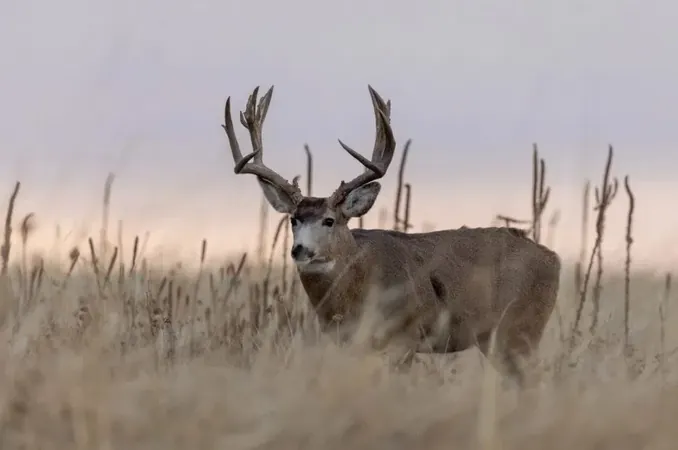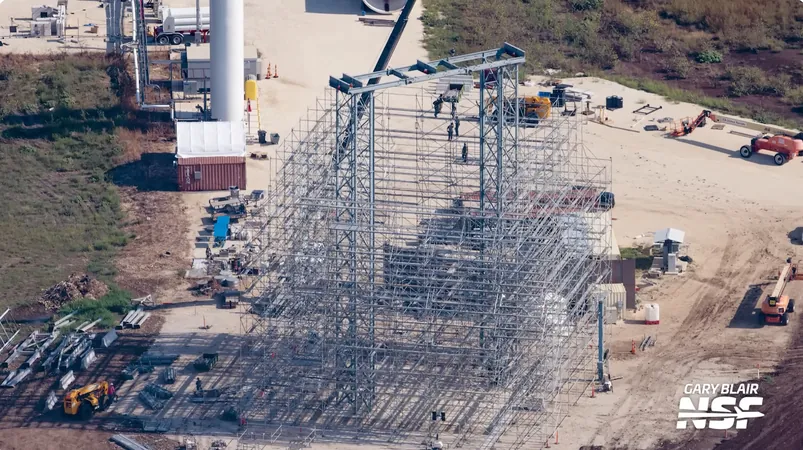
Elk and Bear Populations Thrive While Mule Deer Face Crisis: A Hunting Season Outlook
2025-09-02
Author: Olivia
Hunting Season is Here!
As fall descends on Saskatchewan, the hunting season has officially kicked off, bringing both anticipation and challenges for outdoor enthusiasts.
Landowner Permissions: A Key Challenge for Hunters
Darrell Crabbe, the executive director of the Saskatchewan Wildlife Federation, recently highlighted the hurdles hunters face in securing permissions to hunt on private lands during an appearance on the Evan Bray Show.
Up and Down: Game Populations in Jeopardy
Crabbe revealed an interesting trend: while elk and bear populations are on the rise, mule deer are in serious decline, primarily due to Chronic Wasting Disease (CWD). He emphasized how critical it is to understand these fluctuations for responsible hunting.
Chronic Wasting Disease: A Looming Crisis
CWD continues to wreak havoc on deer populations in Saskatchewan, making it the area with the highest prevalence of the disease in North America. This is particularly concerning for mule deer, which are particularly vulnerable due to their social behavior.
Economic Impact of Declining Mule Deer Numbers
The decline in mule deer also poses an economic threat. Hunting is an economic powerhouse in Saskatchewan, generating approximately $700 million annually. As interest in mule deer hunting wanes, so too might vital economic contributions to rural communities.
The State of the Hunting Community
Crabbe indicated that while hunter numbers have remained stable for about 20 years, recent trends suggest a decline due to myriad factors, including issues with gaining permission to hunt on private property. This situation highlights the need for a more systematic approach to connect hunters and landowners.
Navigating Private Lands: The Permission Dilemma
Hunters are required to obtain permission to access private lands, but this can be a convoluted process. Crabbe pointed out that existing apps, like HABISask, show public lands but do not adequately address the issue of who owns private parcels. Finding a more efficient means of connecting hunters with landowners is a priority.
Innovative Solutions on the Horizon?
Crabbe mentioned the possibility of developing new tools and systems, influenced by successful programs in the U.S., to simplify the process for both hunters and landowners.
Lessons from Earlier Hunts
Discussing recent elk hunts, Crabbe noted ongoing concerns about hunting pregnant elk, reflecting the community's desire to engage responsibly with wildlife management.
The Feral Pig Situation: A Misunderstood Crisis
Saskatchewan is also tackling the issue of feral pigs, which Crabbe described as overstated. The Saskatchewan government is actively trapping and eliminating these populations to mitigate their impact on local ecosystems.
Gopher Control Success: Collaboration is Key
On a more positive note, Crabbe reported success in the gopher control program, connecting hunters with landowners to manage gopher overpopulation effectively. This initiative will help pave the way for better wildlife management practices in the future.
In Conclusion: A Season of Challenges and Opportunities
As the hunting season unfolds, Saskatchewan faces both grim challenges and budding opportunities in wildlife management. The balance between preserving populations and maintaining hunting traditions will be critical in the months ahead.









 Brasil (PT)
Brasil (PT)
 Canada (EN)
Canada (EN)
 Chile (ES)
Chile (ES)
 Česko (CS)
Česko (CS)
 대한민국 (KO)
대한민국 (KO)
 España (ES)
España (ES)
 France (FR)
France (FR)
 Hong Kong (EN)
Hong Kong (EN)
 Italia (IT)
Italia (IT)
 日本 (JA)
日本 (JA)
 Magyarország (HU)
Magyarország (HU)
 Norge (NO)
Norge (NO)
 Polska (PL)
Polska (PL)
 Schweiz (DE)
Schweiz (DE)
 Singapore (EN)
Singapore (EN)
 Sverige (SV)
Sverige (SV)
 Suomi (FI)
Suomi (FI)
 Türkiye (TR)
Türkiye (TR)
 الإمارات العربية المتحدة (AR)
الإمارات العربية المتحدة (AR)